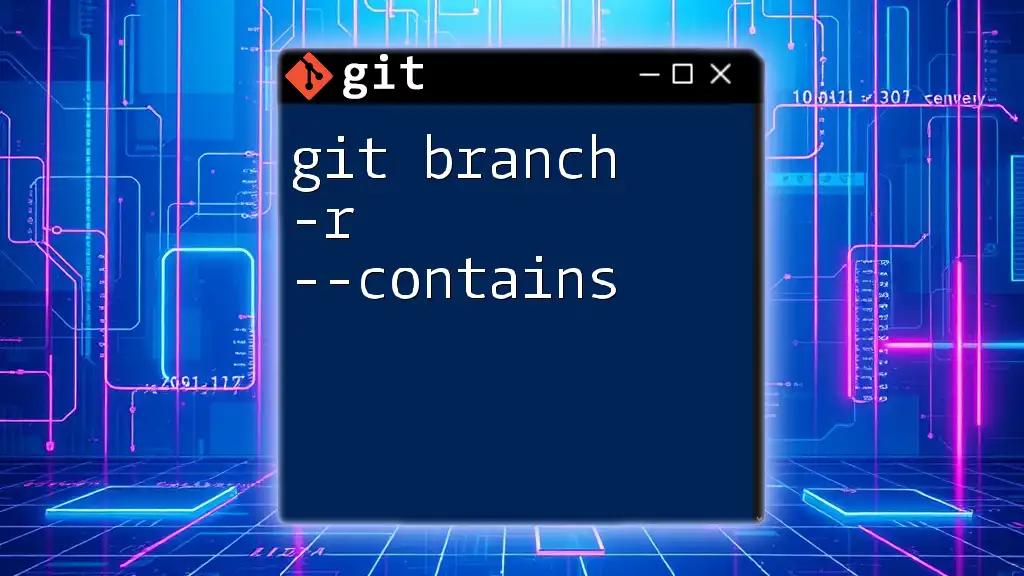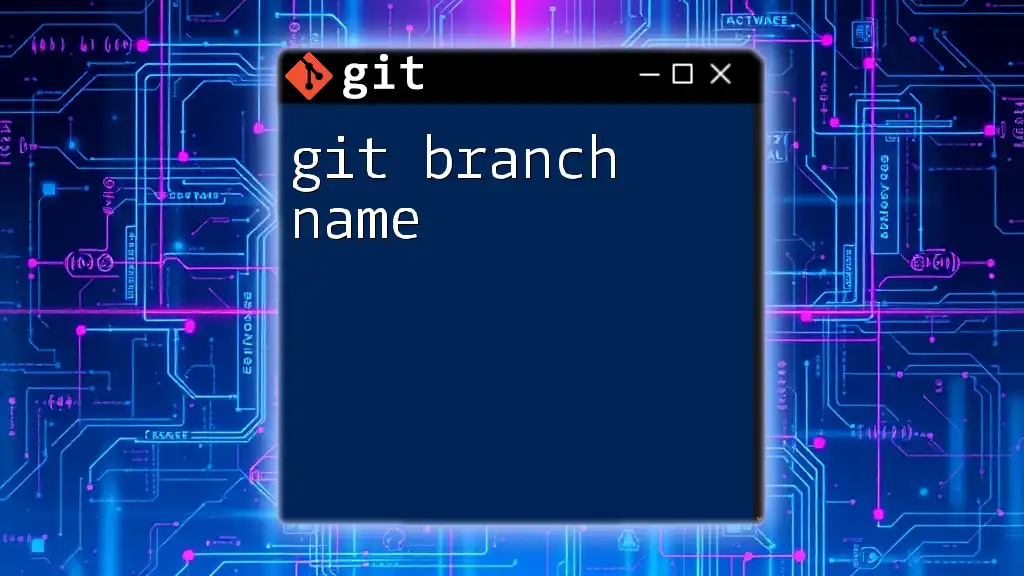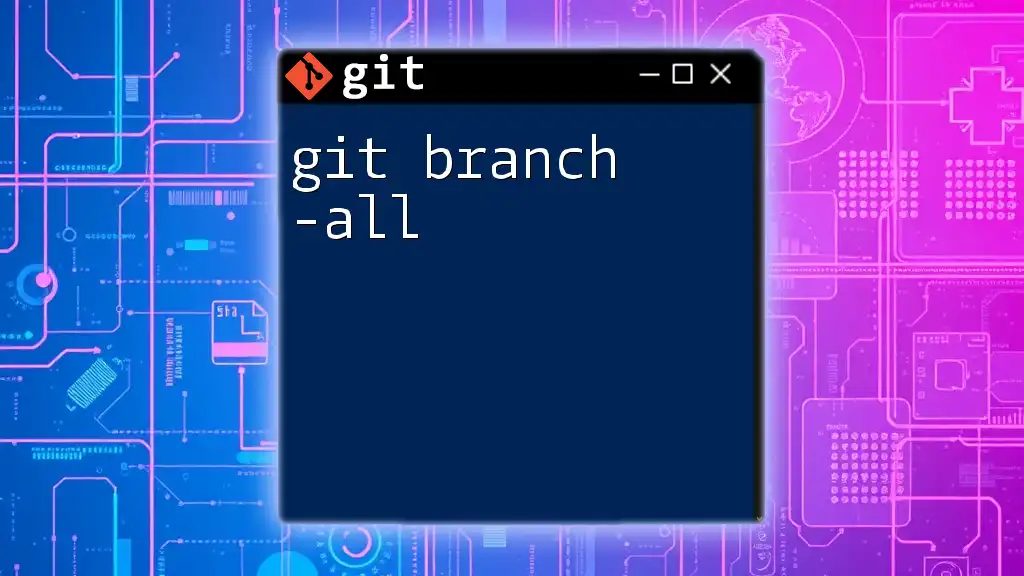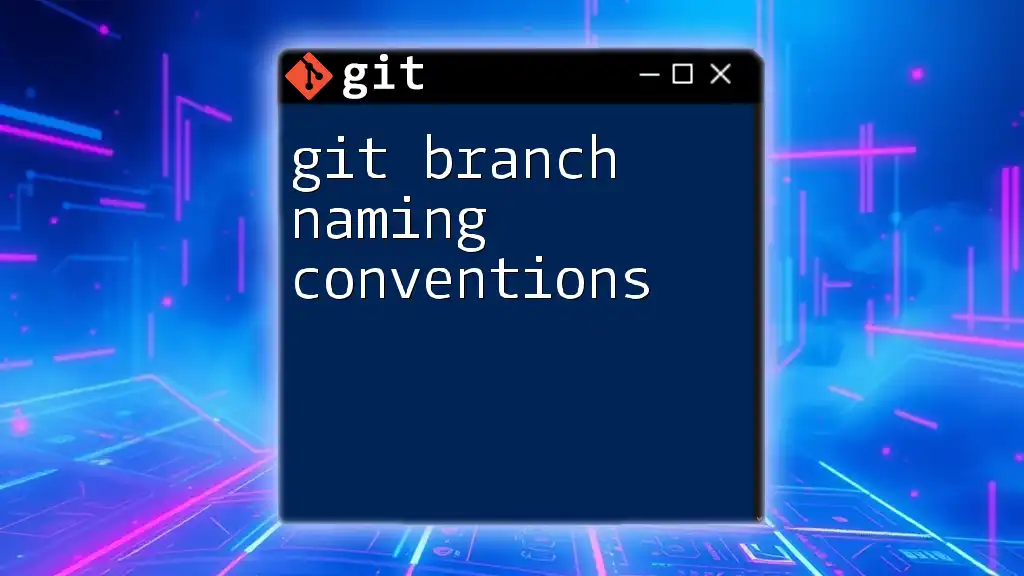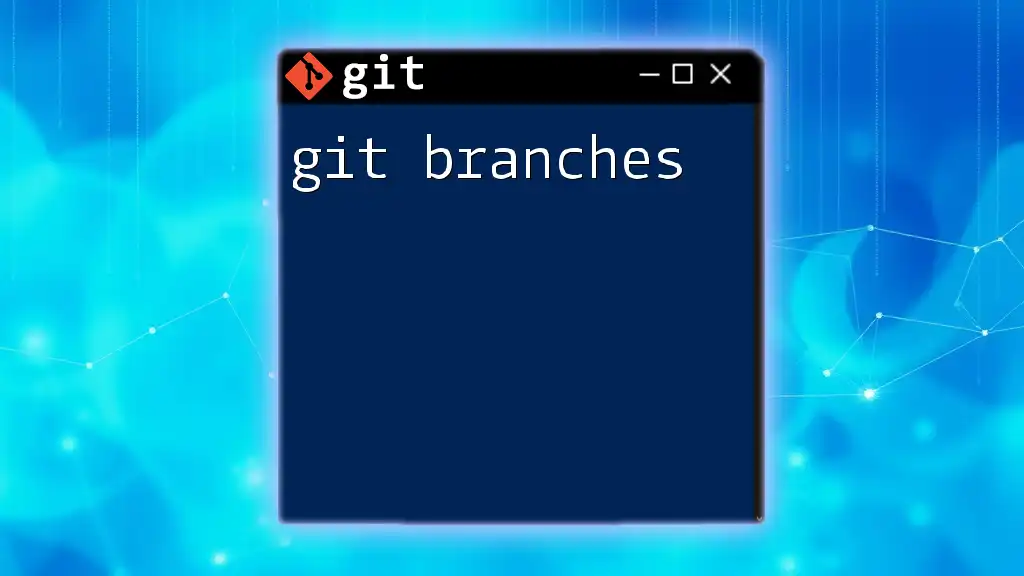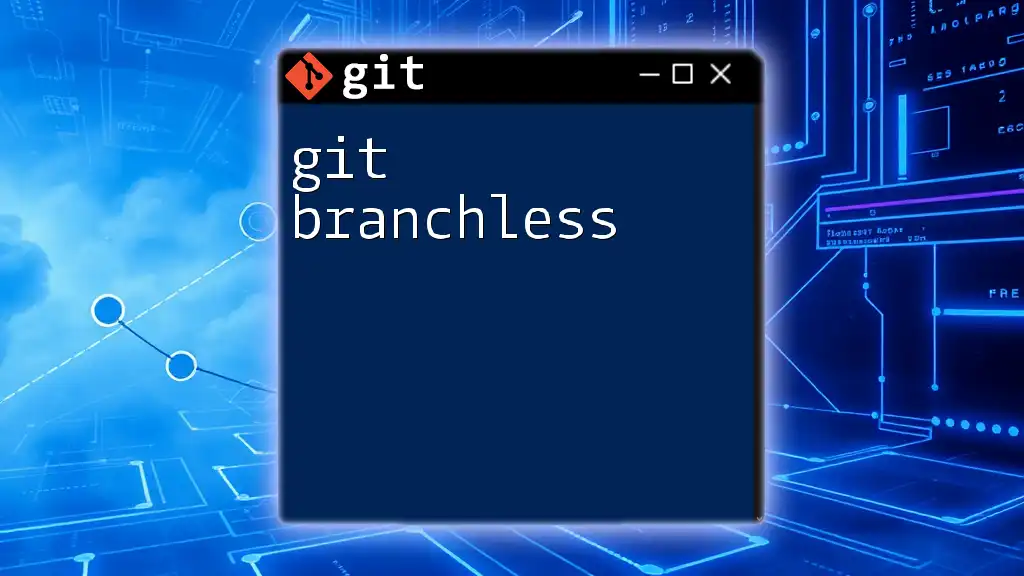The `git branch -r --contains <commit>` command lists all remote branches that contain the specified commit, helping you identify where that commit exists in your remote repository.
git branch -r --contains <commit>
What is Git Branching?
In Git, branching is an essential feature that allows developers to diverge from the main line of development and continue to work independently without disturbing the original codebase. Each branch can represent a specific feature, a bug fix, or an experiment, facilitating parallel workflows.
Understanding remote branches is equally vital since they provide a way to track changes made by others in a collaborative environment. This conceptual separation of local and remote branches ensures a smooth development process.
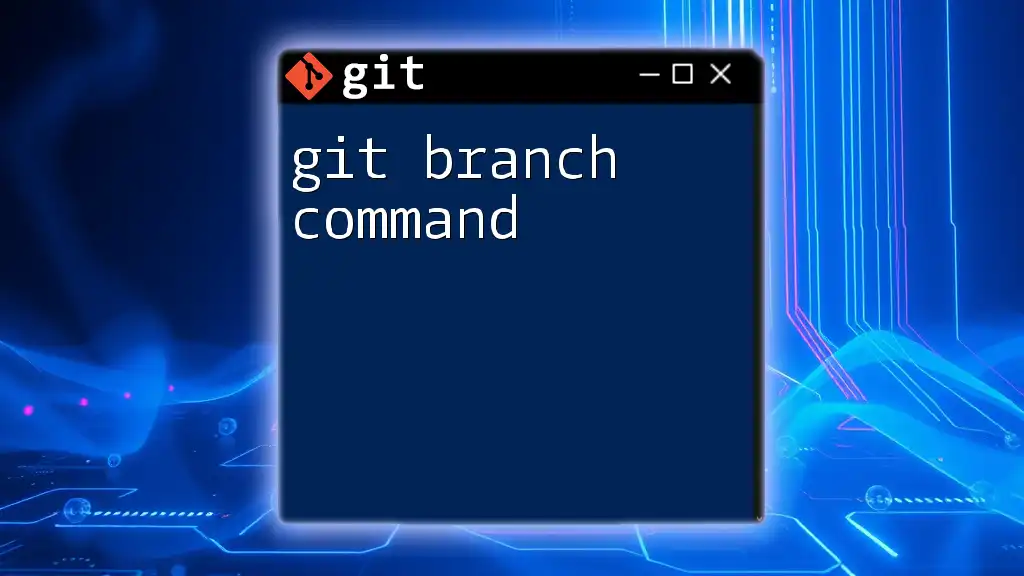
Understanding the `git branch` Command
The `git branch` command is pivotal for managing branches in a Git repository. It serves multiple purposes, including:
- Creating new branches for features or fixes.
- Listing all available branches, both local and remote.
- Deleting branches that are no longer needed.
Types of Branches
Branches in Git can be categorized into:
-
Local Branches: Reside on your machine, allowing you to develop features or fixes privately until you are ready to merge them with the main branch.
-
Remote Branches: Synced to a remote repository, representing the state of branches as they exist on the server. Understanding the distinction between these two types helps you navigate your Git workflows more effectively.

Deep Dive into `git branch -r`
What Does `-r` Mean?
The `-r` flag in the `git branch` command is synonymous with "remote." When used, it lists all the branches available on the remote repository. Understanding remote branches allows you to collaborate effectively by making it clearer how your work relates to the work of others.
Use Cases of `git branch -r`
Utilizing `git branch -r` can be particularly useful for:
- Listing all remote branches, allowing you to review what branches you and your team are working on.
- Gaining insight into the remote repository's structure, ensuring that you have visibility over ongoing work, thus preventing redundant efforts.

Exploring `--contains`
What Does `--contains` Do?
The `--contains` flag helps you determine whether a specific commit exists in one or more branches. Essentially, it checks the reachability of a commit, telling you which branches include the specified commit. This feature is fundamental in understanding code propagation through branches.
Use Cases for `--contains`
Common scenarios where `--contains` is valuable include:
- Identifying branches that include a specific commit, which is crucial when reviewing features or bug fixes that need to be integrated elsewhere.
- Assessing how changes have been propagated across your branches, enhancing your ability to perform effective code reviews and merges.
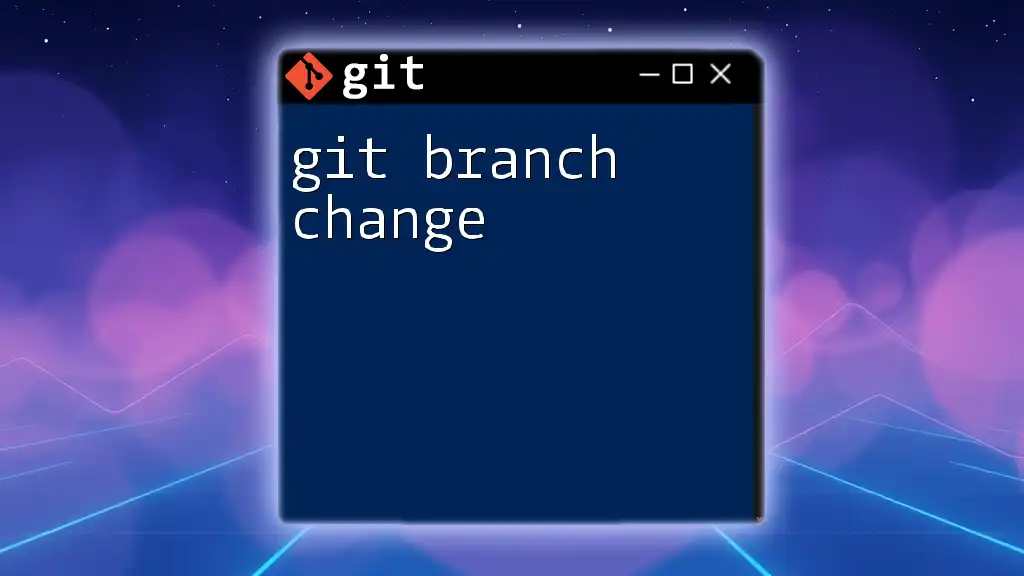
Combining `-r` and `--contains`
Syntax and Usage
The combined command `git branch -r --contains <commit>` becomes a powerful tool for developers. The general syntax looks like this:
git branch -r --contains <commit>
In this command, replace `<commit>` with the hash of the commit you want to investigate. This command provides a list of remote branches containing that specific commit.
Practical Examples
Example 1: Finding Remote Branches Containing a Commit
Imagine you have a commit with the hash `abc1234` that you want to check against your remote branches. You would use:
git branch -r --contains abc1234
The output may look something like this:
origin/feature-branch-1
origin/release-branch
This output indicates that both `feature-branch-1` and `release-branch` on the remote contain the specified commit, allowing you to understand where changes have been integrated.
Example 2: Working with Merges
After merging a branch named `merge_branch`, you may want to verify which remote branches have this merged commit. The command would be:
git branch -r --contains merge_branch
This ensures a clear understanding of where the merge changes have been applied across remote branches, helping you avoid repetition in code integration and ensuring a clean history.
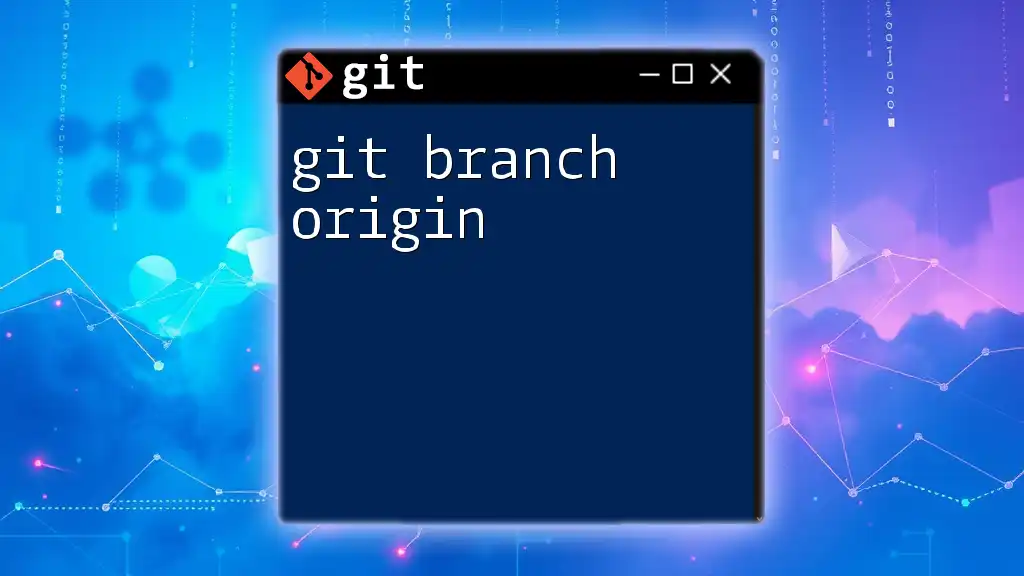
Best Practices for Using `git branch -r --contains`
When to Use the Command
Utilizing the command `git branch -r --contains` is particularly useful in these situations:
- Before merging a branch, to ensure that all necessary commits are integrated into your target branch.
- To validate code modifications across remote branches when collaborating in a team environment.
Tips for Effective Branch Management
Maintaining clean branches and a tidy Git history is crucial for effective collaboration. Here are several strategies:
- Regularly prune remote branches that are no longer in use.
- Utilize `git fetch` to keep your local copy of the remote branches updated before running your commands, ensuring you're working with the most current data.
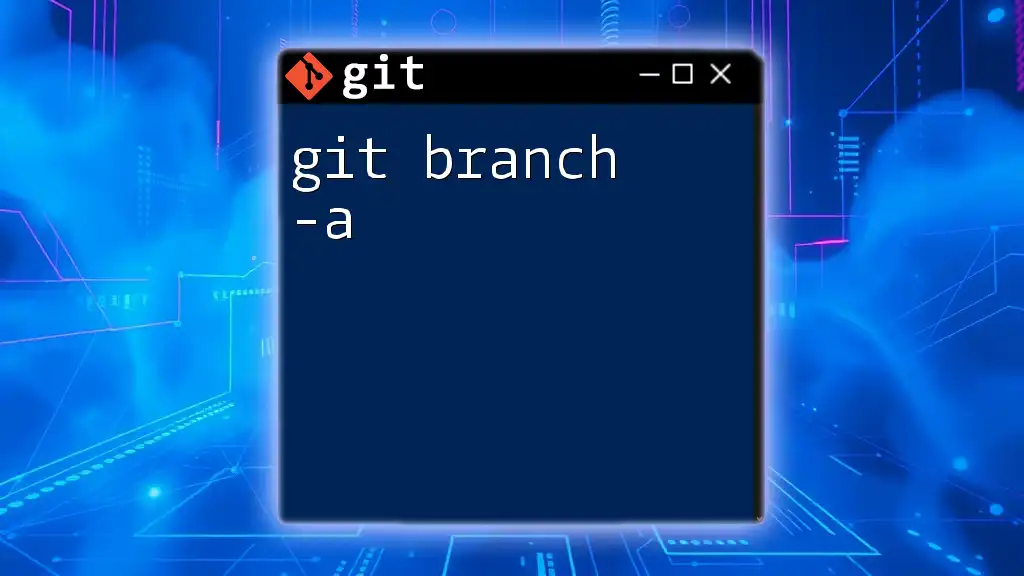
Common Mistakes and Troubleshooting
Misinterpretations of Outputs
Users might often misinterpret the outputs of `git branch -r --contains`. It's essential to be aware that:
- The output only lists remote branches that include the specified commit, which may not include branches that exist locally without a corresponding remote branch.
Effective Troubleshooting Techniques
In the event of confusion, you can delve deeper into the commit history with commands such as `git log <branch-name>` or `git show <commit-hash>`. These commands provide additional context by revealing the commit details and its effects on the branch history.
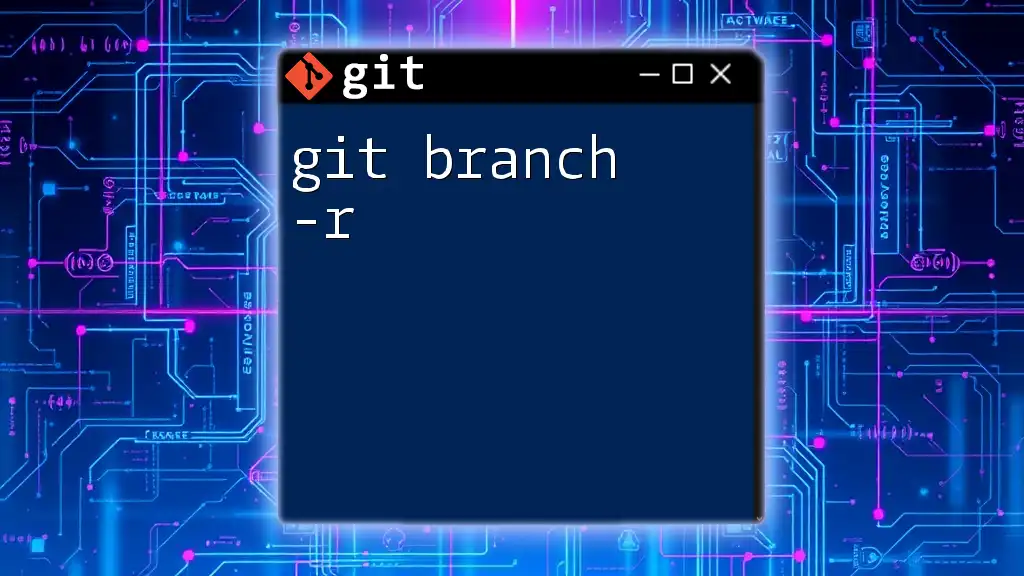
Conclusion
In summary, the command `git branch -r --contains` is a powerful asset in the Git toolkit, enabling you to track and manage how changes propagate through remote branches. Understanding this command aids in maintaining code integrity during collaborative development.
To further enhance your Git skills and explore additional commands, consider practicing with example commands. You might also benefit from immersive workshops designed to deepen your understanding of these essential tools in version control.
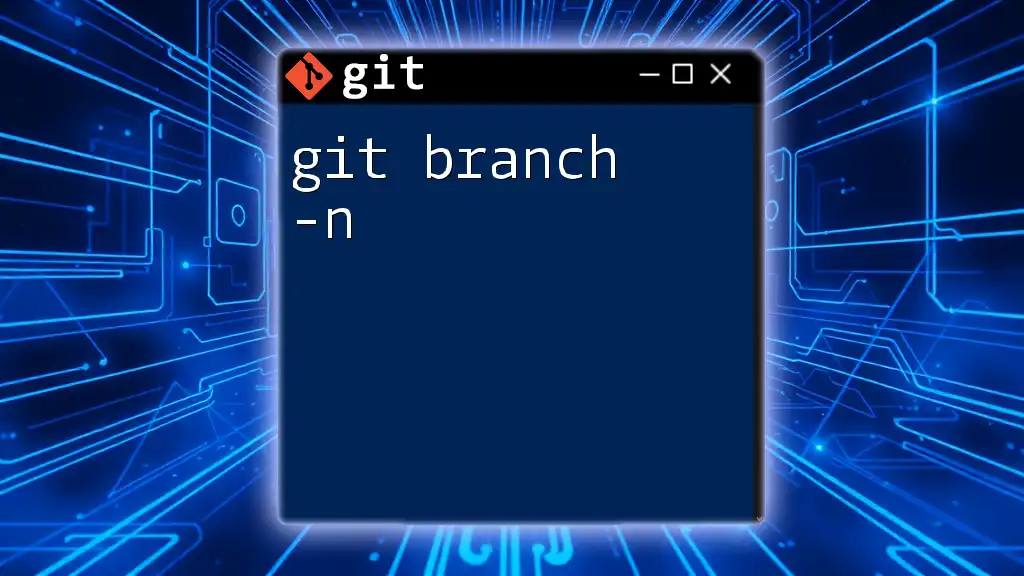
Additional Resources
For continued learning, you can check the official [Git documentation](https://git-scm.com/doc) or explore various tutorials and online courses dedicated to mastering Git. These resources will extend your knowledge and proficiency as you navigate the complexities of version control.

FAQs
-
What happens if a branch has a detached HEAD state? The command will still function, but you may not retrieve the expected output since it refers to commits that are not part of a branch.
-
How do I know if a commit is orphaned? If `git branch -r --contains <commit>` provides no output, the commit might not belong to any branch, indicating that it could be orphaned or related to a deleted branch.

